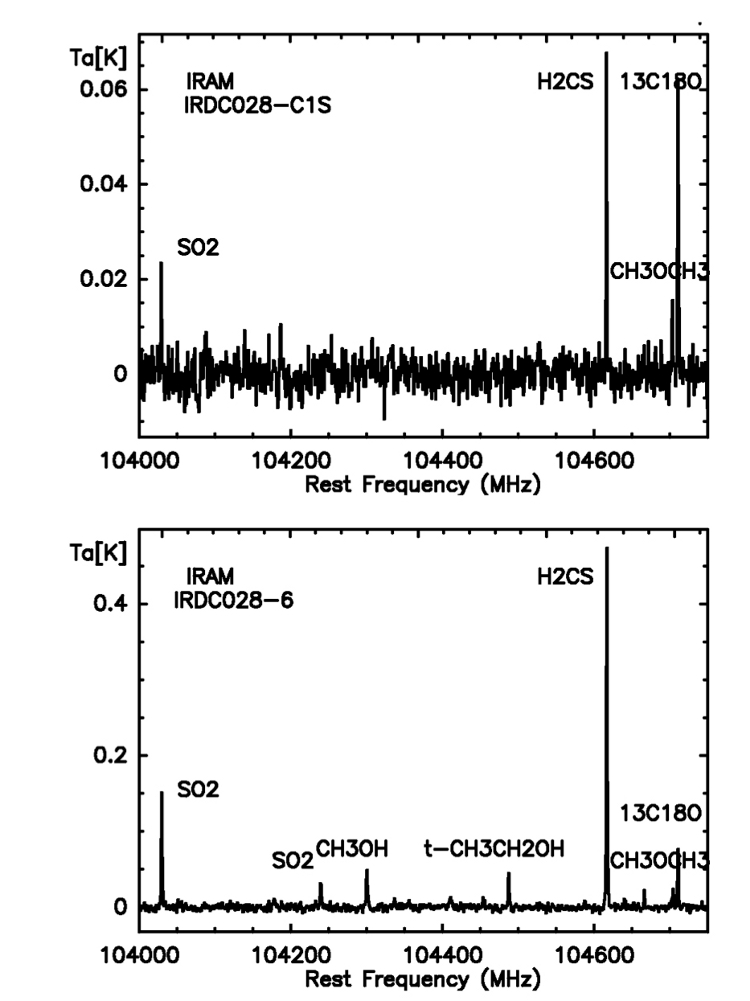| EPoS Contribution |
|
Chemical variations in Infrared Dark Clouds: from starless cores to hot core candidates
Tatiana Vasyunina MPIfR, Bonn, DE | |
|
Since the pioneering study of chemistry in the Infrared Dark Clouds
(IRDCs) -- the earliest star-formation regions, a wealth of molecular
line data have been collected and analyzed, providing a basic
understanding of relevant physical and chemical processes. Using a
high-sensitivity and a broad frequency coverage of the modern
radio-telescopes, we detected more that 20 species of different
chemical families in several representative IRDCs. This unique dataset
enables us to perform detailed analysis and modeling of the chemical
evolution of IRDCs. With our first model, based on state-of-the-art
gas-grain chemical network and static physical conditions (0D), the
evolutionary behavior of the simple molecules such as N2H+, HCO+, HCN,
HNC, has been explained. In the second step this analysis was extended
toward complex organic molecules, namely, CH3CCH, CH3OH, CH3CHO,
CH3OCH3 and CH3OCHO. It was found that their observed abundances
cannot be reliably reproduce with the simple model. To achieve a
better agreement with the observations, we had to take non-thermal
desorption mechanisms and the thermal evolution of the environment
into account. With such a fully time-dependent physico-chemical model
we obtained a reasonably good fit to the abundances of both simple
species and complex organic molecules. Our current studies show that
the inclusion of deuterated species in this model may help to
constrain the shape of the temperature profile and the pace of the
warm-up.
As IRDCs often possess of both active and quiescent star-forming regions, we have chosen for a more detailed study a starless core candidate and a hot core candidate within IRDC028.34+0.06. I will present the newly observed spectra and detected lines and molecules, as well as the elaborate analysis of the data followed by the chemical modeling utilizing different IRDCs models from simple 0D to more realistic 3D-RMHD structures. | |
 | |
| Caption: IRAM spectra for starless core candidate IRDC028-C1S and hot core candidate IRDC028-6 | |
| Collaborators: H. Linz, MPIA, Germany D. Semenov, MPIA, Germany U. Hincelin, UVa, USA E. Herbst, UVa, USA Y. Aikawa, KOBE U, Japan H. Beuther, MPIA, Germany B. Commercon, LERMA, France K. Oberg, CfA, USA F. Wyrowski, MPIfR, Germany K. Menten, MPIfR, Germany |
Key publication
Suggested Sessions: Chemistry |

